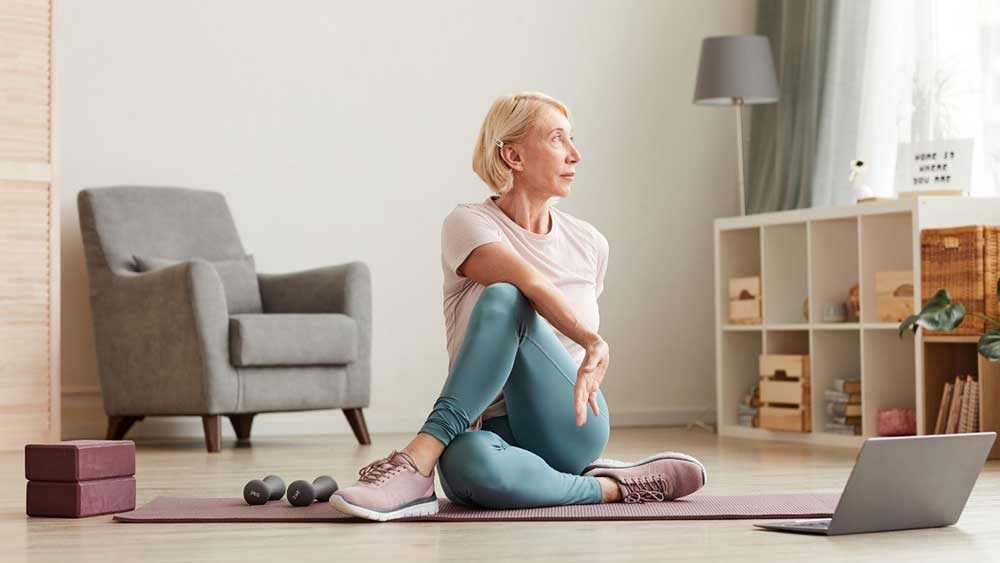

7 Tips to Help Caregivers Create Time for Exercise
November is National Family Caregivers Month. Each year, we take this opportunity to honor the millions of people in the U.S. who do so much to support the well-being of older parents, spouses with disabilities, and other loved ones.
This year, the load was especially heavy for family caregivers. Whether their loved one lives with them, or independently in their own home, or in a senior living community, family caregivers have been scrambling to keep these elders safe and connected. Many have had less help this year and have been virtually on their own as other family quarantined and were unable to visit. Even before the pandemic, family caregivers often neglected their own medical care and healthy lifestyle recommendations—and this year has been even more challenging.
One item that can easily sink to the bottom of a family caregiver’s to-do list is exercise. Much research shows that the stress and workload of family caregiving increase the risk of heart disease, diabetes, depression, dementia and even early death. Exercise lowers the risk. And yet, the busy day of a caregiver can pass so quickly that there is no time for physical activity.
Here are seven tips that can help:
#1 Make exercise a priority. Get it on your calendar. Create a motivating reminder and post it on the refrigerator door or your bathroom mirror. Personalize it for yourself. It might look something like this:
I should exercise today …
- For my all-around health.
- For my emotional well-being.
- To help control my diabetes.
- To maintain a healthy weight.
- To protect my brain.
- To bring me joy.
#2 Set up a home exercise station. If it’s hard for you to leave your loved one alone, work out to an exercise video, ask your doctor for a set of home exercises, or if it’s feasible, set up a modest home gym with weights and other equipment. Stanford University researcher Cynthia M. Castro, Ph.D., did an in-depth study demonstrating the effectiveness of a home-based exercise program for caregivers, reporting, “This kind of approach has a lot to offer. It’s convenient, it fits with their schedule and it doesn’t require them to leave home.”
#3 Make time for “exercise snacks.” We’re advised to get 150 minutes of moderate-intensity exercise each week—but, say experts, we can spread that time out if we need to. For example, make a point to walk up and down the stairs in your home several times each day. Do quick sets of exercises, such as jumping jacks or squats. Lift weights or march in place if you’re watching TV with your loved one. Every little bit counts.
#4 Find ways to be active with your loved one. Most likely, the person you’re caring for has some type of prescribed exercise routine. Doing those exercises with them could motivate them and provide you with a few more “exercise snacks.” Does your loved one use a motorized scooter or wheelchair? Find accessible trails and paths in your area and go on walks/rides together. Some caregivers report that pushing their loved one’s manual wheelchair provides a good workout for them and pleasant diversion for their loved one. But be sure your loved one’s wheelchair is in good working order, with tires properly inflated. And use good body mechanics, both during your walk and when helping your loved one into and out of the wheelchair.
#5 Combine exercise and socializing. Even if you spend many hours each week on caregiving, it’s important to spend time with other loved ones and friends, as well. Double the benefit by going for a walk with your spouse or taking an exercise class with a friend. Today there are even “walking support groups,” where members of the group go for a walk while sharing thoughts and experiences.
#6 Carve out time for a solitary workout, as well! Exercising alone can give us time to clear our heads, making it the ultimate “me time.” It can also mean a higher-intensity workout. A 2021 study from Purdue University found that when two people walk together, the faster person often adjusts their speed to match the slower companion. “We were hoping that there would not be a reduction in speed where partners walked together,” reported associate professor of nursing Libby Richards. “We hoped that slower partners would speed up to match the faster partners, but that was not the case. However, it’s important to note that any physical activity or walking—regardless of speed—is better than none.”
#7 Get help. When carving out time to go to the gym or for a run, you might hesitate to ask other family members or friends to help out. But ask anyway. It is not self-indulgent. Share that your doctor has prescribed exercise for you. And if your family uses in-home care to help your loved one with personal care and supervision, use some of that respite time for your exercise routine.
Remember: Caregiving is hard work. Exercise helps you build the stamina and resilience to be a better caregiver for your loved one.







